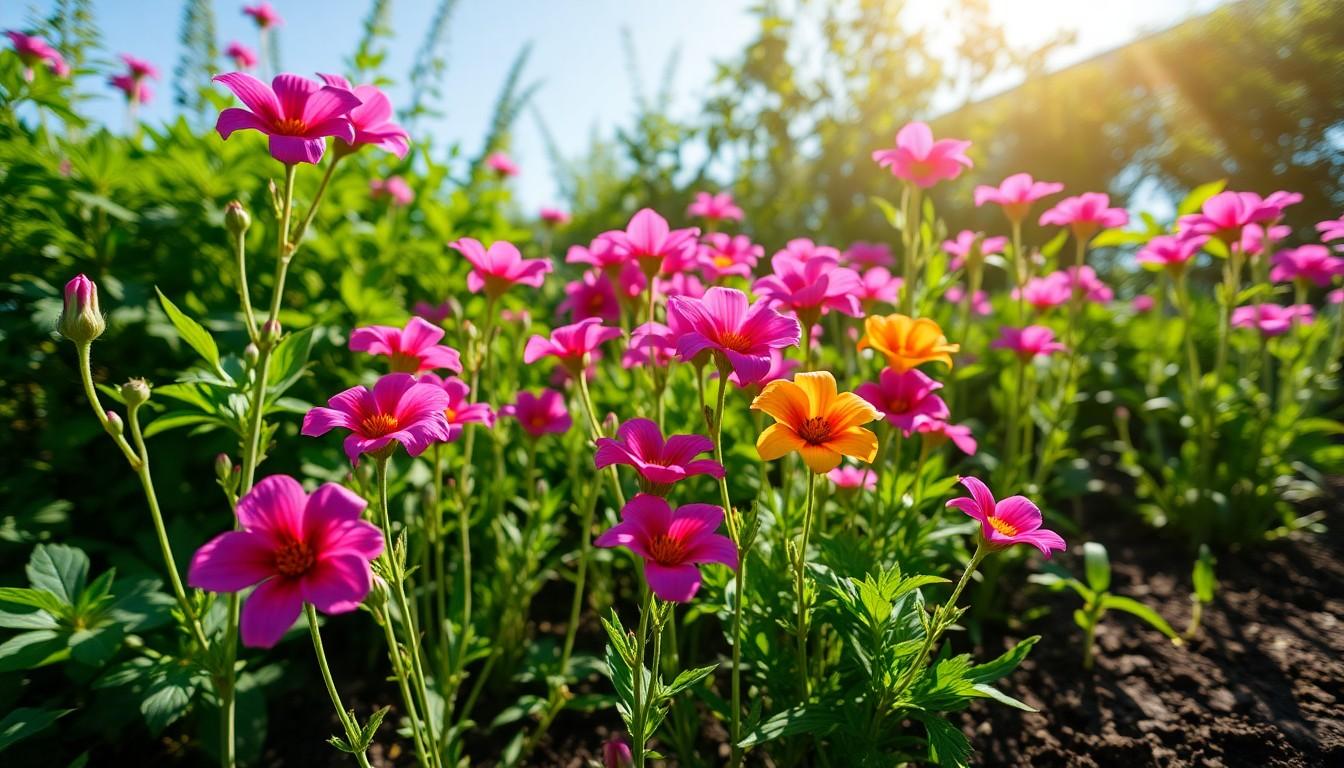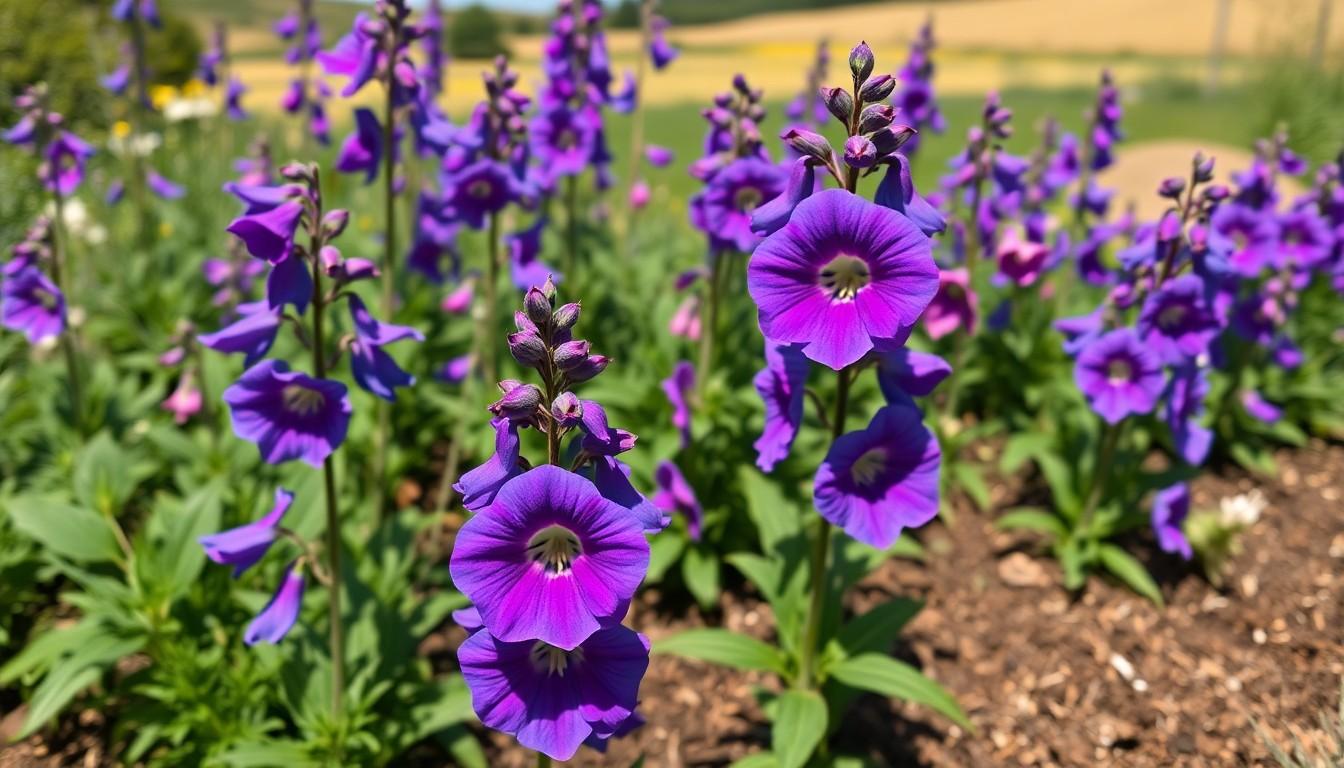If you’ve ever wanted to add a splash of color to your
organic garden without the fuss, the bellflower plant is your new best friend. With its charming bell-shaped blooms and easy-going nature, it’s the perfect companion for both seasoned gardeners and those just starting out. Imagine your garden bursting with vibrant hues while you kick back and sip your favorite drink—sounds dreamy, right?
But like any good relationship, the bellflower needs a little TLC to thrive. From choosing the right soil to mastering the watering routine, understanding bellflower plant care is essential. Not to worry, though—this guide will have you feeling like a plant whisperer in no time. So roll up those sleeves and get ready to embrace the floral magic that bellflowers can bring to your space.
Bellflower Plant Care
Bellflower plants thrive with proper attention and care. Selecting well-drained soil enriches their growth. Aim for a mixture containing organic matter to enhance nutrient availability.
Watering requires a balanced approach. Soil should remain consistently moist but not waterlogged. Observing the plant’s leaves can indicate hydration needs; wilting signifies a need for more water.
Sunlight plays a significant role in their health. Bellflowers prefer full sun to partial shade, receiving at least six hours of sunlight daily. Limited light exposure may affect blooming patterns.
Fertilization enhances flowering potential. Using a balanced, water-soluble fertilizer every four to six weeks supports growth from spring to midsummer. Over-fertilization could lead to excessive foliage growth at the expense of blooms.
Pruning practices contribute to longevity. Trimming spent flowers encourages further blooming and maintains the plant’s shape. Regularly remove damaged or dead foliage to promote air circulation and deter diseases.
Pest management remains crucial for optimal health. Inspections should occur regularly to identify common pests such as aphids or spider mites. Utilizing insecticidal soap when infestations occur provides a safe treatment.
Observing these essential care practices ensures bellflowers flourish, creating vibrant displays and enriching garden aesthetics. Following these guidelines helps gardeners of all experience levels enjoy the beauty and resilience of bellflower plants.
Growing Conditions for Bellflowers
Bellflowers thrive in specific growing conditions that ensure vibrant blooms and robust health. Understanding light and soil preferences is crucial for optimum growth.
Light Requirements
Bellflowers prefer full sun exposure, thriving best with at least six hours of direct sunlight daily. They perform well in bright locations, leading to more abundant flowering. In partial shade, bellflowers may still grow but often produce fewer blooms. Gardeners should consider sunlight patterns when selecting planting locations. Morning sunlight is especially beneficial, as it helps dry dew evenly, reducing the risk of fungal diseases.
Soil Preferences
Well-drained soil is essential for bellflowers to prevent root rot. This plant enjoys a mix enriched with organic matter, which improves moisture retention and drainage. A pH level of 6.0 to 7.0 is ideal for optimal nutrient availability. Gardeners can enhance the soil by incorporating compost or aged manure. Regular soil testing helps determine specific amendments needed for improved fertility. By creating the right soil conditions, bellflowers exhibit strong growth and vibrant color.
Watering and Fertilization
Proper watering and fertilization are essential for bellflower health and flowering potential. These practices ensure the plant thrives while maintaining vibrant blooms.
Watering Schedule
Establishing a consistent watering schedule promotes steady growth. The bellflower prefers soil that remains slightly moist but not soggy. Watering once a week typically suffices during dry spells, but increased frequency may be necessary during extreme heat. Checking the soil’s top inch can guide watering decisions; if it feels dry, it’s time to water. Avoiding waterlogged conditions protects against root rot, a common issue for bellflowers. Ensuring good drainage in pots or garden beds reduces unwanted water accumulation as well.
Recommended Fertilizers
Using the right fertilizers boosts blooming and overall plant health. A balanced, water-soluble fertilizer, such as a 10-10-10 formula, offers essential nutrients. Fertilizing every four to six weeks during the growing season promotes lush foliage and abundant flowers. Organic options like fish emulsion or compost tea also enhance nutrient uptake. Gardeners can consider slow-release fertilizers for a steady supply over time. Applying products at the base of the plant avoids leaf burn and ensures nutrients reach the roots effectively.
Common Pests and Diseases
Bellflower plants can face threats from various pests and diseases. Recognizing these issues early helps gardeners maintain healthy blooms.
Identifying Pests
Aphids often appear as small, green or black insects on leaves and stems. Spider mites, tiny but troublesome, cause yellowing leaves and webbing under foliage. Look for thrips, which can create silvery streaks on petals. Additionally, slugs and snails might leave distinct trails while damaging leaves. A thorough inspection of plants allows for timely identification. Checking both the upper and lower leaf surfaces proves essential for uncovering hidden pests.
Disease Prevention and Treatment
Fungal diseases pose significant risks to bellflower plants. To reduce this risk, ensure proper air circulation around plants. Keeping foliage dry helps prevent issues like powdery mildew. Regularly monitoring for signs of disease, such as discolored leaves or wilting, supports early intervention. Applying organic fungicides effectively manages outbreaks. Gardeners should also practice crop rotation and remove infected debris to limit disease recurrence. By following these steps, bellflowers can thrive in vibrant health.
Pruning and Maintenance
Pruning plays a vital role in maintaining the health and appearance of bellflower plants. Remove dead or faded blooms throughout the growing season to encourage new growth and increased flowering. This practice, known as deadheading, promotes bushier growth and enhances overall aesthetics.
In addition to deadheading, cutting back the plant after the blooming period fosters stronger emergence in the next season. Trim approximately one-third of the plant’s height. Performing this task in late fall or early spring is optimal, as it prepares the plant for new growth.
Regular inspection is crucial to identifying and addressing issues promptly. Examine plants for signs of pests such as aphids or spider mites. If detected, apply organic pesticide treatments for effective control. Maintaining good air circulation around the plants also aids in preventing fungal diseases.
Mulching acts as a protective layer for bellflower plants. Apply a 2 to 3-inch layer of organic mulch, such as wood chips or straw, around the base. This practice retains moisture, regulates soil temperature, and suppresses weed growth, promoting a healthier environment.
Adjusting watering practices is essential in maintaining proper moisture levels. Ensure soil is consistently moist but never soggy. Monitoring the weather conditions can help gauge when additional watering is necessary, particularly during heatwaves.
Lastly, consider fertilization during the growing season. Use a balanced, water-soluble fertilizer every four to six weeks to promote vibrant blooming and healthy foliage. Following these maintenance practices ensures bellflower plants remain vibrant and flourishing year after year.
Transforming your Garden
Caring for bellflower plants can transform any garden into a vibrant display of color. With the right attention to soil, sunlight, and watering, these resilient flowers can thrive effortlessly. Regular pruning and pest management not only enhance their appearance but also promote healthy growth.
By following the outlined care practices, gardeners can ensure their bellflowers bloom beautifully season after season. This low-maintenance plant is an excellent choice for anyone looking to add charm to their outdoor spaces. With dedication to proper care, bellflower plants can become a stunning focal point in any garden.



